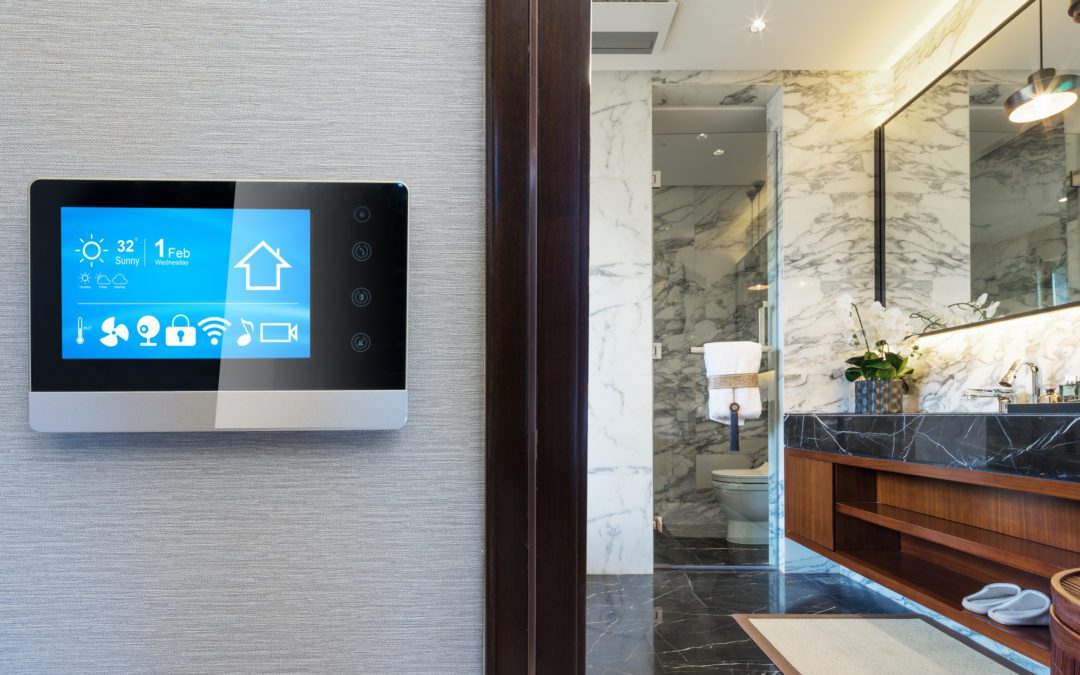Whether you are replacing your home’s existing thermostat or building a new house and wondering what type of thermostat to buy, you should at least spare some consideration for smart thermostats. When used strategically and correctly, a smart thermostat can provide significant gains in intuitive usability, home comfort, and even energy usage. In this post, we will discuss the basic pros and cons of smart thermostat technology to help you get an idea of whether upgrading to a smart thermostat is right for you.
What Is a Smart Thermostat?
While smart thermostats have been around (and pretty popular) for several years now, there is still occasionally some confusion about what they are and what they do. To be clear, there is a difference between a smart thermostat and a programmable thermostat. A programmable thermostat is essentially just the forerunner of the smart thermostat—though that technology certainly already had “smart” features. With a programmable thermostat, the key selling point is that you can set a heating/cooling schedule throughout the day. If you spend the core part of the day off at work, for instance, a programmable thermostat is useful because it can allow you to reduce how much heating or cooling energy you are using during those parts of the day when no one is home.
A smart thermostat takes this basic concept and advances it in several notable ways, depending on which model you have. More basic smart thermostats incorporate all the scheduling capabilities of programmable thermostats, but also work with a mobile app that you can download to your phone or tablet and use to control the thermostat from anywhere. For instance, say you are going on vacation in the summer and want to set your home’s temperature a bit higher than usual to reduce the amount of energy you are using on air conditioning. If you forget to set the thermostat before walking out the door, that’s no problem: using your smart thermostat’s app, you can adjust the thermostat from the car, the airplane, or the hotel room at your destination. No matter how many hundreds or thousands of miles you are from home, a smart thermostat still allows you to maintain control of your home’s temperature settings.
A more advanced smart thermostat, meanwhile, will actually learn the patterns and schedules of your household and use that information to set an optimal, energy-efficient heating and cooling schedule. These devices use machine learning and smart home technology to learn, for example, when you are usually home throughout the day versus when you are away. They can also link with weather forecasts to understand exterior temperatures, seasonal shifts, or severe weather—all data that can also help provide the most comfortable interior temperature for your home.
The Pros and Cons of a Smart Thermostat
Do you really need a smart thermostat? The answer to this question will be different for every household. However, considering these commonly cited pros and cons of smart thermostats should help you decide which side of the debate on which you will land:
Pros
- Intuitive design. ‘Can I use a smart thermostat?’ is a common question, and it comes with a simple answer. That answer is ‘Yes!’ Smart thermostats are intuitive and easy to use, even right out of the box.
- Energy savings. The average ENERGY STAR smart thermostat will save you eight percent of your heating and cooling energy usage each year, or about $50 worth.
- The ability to ‘set it and forget it.’ Programmable thermostats, if you take the time to program them to suit your schedule, can provide roughly the same energy savings as smart thermostats. However, studies have shown that as much as 89 percent of homeowners actually never set a weekday/weekend schedule on their programmable thermostats. For these folks, the ability that smart thermostats offer to ‘set it and forget it’ will surely appeal. You’ll need to make a few adjustments at first, as your unit is learning your schedule, but after a few days/weeks, your thermostat will be in sync with your needs, and you won’t need to fuss over it much.
- Remote control capabilities. If you travel a lot or are otherwise away from home regularly, then you will benefit from the ability to monitor and adjust your thermostat from afar.
Cons
- While smart thermostat costs vary depending on which model you choose, they will almost always be significantly more expensive than more bare-bones programmable models.
- Not all heating or air conditioning units work with all smart thermostats. To avoid compatibility issues, you will want to consult with your HVAC professional.
- Minimal benefits for those who are home most of the time. Do you work from home? Are you a stay-at-home parent? Do you homeschool your kids? If the answer to any of these questions is ‘Yes,’ then the benefits for you of having a smart thermostat may be minimal. A big selling point of these devices is that they learn the patterns of your schedule and adjust your heating and cooling accordingly. If you are usually at home, there’s less of a need for constant thermostat adjustments, which in turn means less benefit from a smart thermostat. This consideration is especially pressing due to COVID-19, which caused remote work to double between March and April of this year.
Ultimately, smart thermostats aren’t for everyone, but they can provide significant gains in convenience, in-home comfort, energy efficiency, and affordable utility bills for some customers. If you need help deciding whether a smart thermostat makes sense for you, contact your HVAC professional today.


